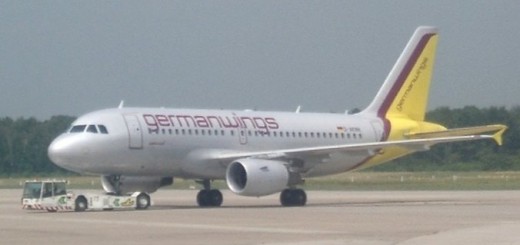Norway Reinforces F-35 Fighter Jet Firepower with U.S. AIM-9X Block II Sidewinder Tactical Missiles in $370M Deal

{loadposition bannertop}
{loadposition sidebarpub}
Norway is set to significantly enhance its air power combat capabilities following the approval of a major Foreign Military Sale (FMS) by the U.S. State Department. Valued at an estimated $370.9 million, the deal includes a substantial number of AIM-9X Block II Sidewinder missiles and a range of related support equipment. The Defense Security Cooperation Agency (DSCA) formally notified U.S. Congress of the proposed sale on May 2, 2025.Follow Army Recognition on Google News at this link
U.S. Air Force Staff Sgt. Troy Emerson, a 354th Air Expeditionary Wing weapons load crew team chief, prepares to load an inert AIM-9X missile. (Picture source: U.S. DoD)
The Norwegian government has requested a comprehensive package comprising 300 AIM-9X Block II air-to-air missiles, 2 AIM-9X Block II Special Air Training Missiles (NATM), 24 Captive Air Training Missiles (CATM), 20 Tactical Guidance Units, and 20 CATM Guidance Units. Alongside these munitions, the agreement includes dummy air training missiles, missile containers, mission-critical software, various training modules, spare and repair parts, publications, and both U.S. government and contractor support services in engineering, logistics, and technical operations.
This acquisition reflects Norway’s strategic commitment to modernizing its air force and maintaining interoperability with its NATO allies. The AIM-9X Block II is one of the most advanced infrared-guided, short-range air-to-air missiles currently in service. Its capabilities include thrust vectoring, enhanced seeker sensitivity, and lock-on-after-launch functions, making it a crucial asset for next-generation aerial combat, especially in close-range engagements.
From a military and tactical standpoint, the AIM-9X Block II provides exceptional dogfighting capabilities that significantly enhance a pilot’s situational advantage. With its Imaging Infrared (IIR) seeker, the missile delivers high tracking accuracy and strong resistance to countermeasures such as flares. One of its standout features is Lock-On-After-Launch (LOAL) capability, allowing it to engage targets beyond visual range (BVR) in certain tactical contexts, enabling greater engagement flexibility from stealth platforms like the F-35.
Another critical capability is its Thrust Vectoring Control (TVC) system, which allows extreme maneuverability mid-flight. This is particularly useful when engaging agile enemy aircraft in high-G, close-in combat situations. The missile’s two-way data link ensures real-time updates during flight, improving accuracy against evasive or fast-moving targets.
Norway’s fleet of F-35A fighter jets will greatly benefit from the integration of these missiles, providing them with superior agility and precision in confronting evolving aerial threats. The synergy between the F-35’s advanced sensor suite and the AIM-9X’s high off-boresight targeting, especially when used with helmet-mounted cueing systems, creates a lethal combination that few adversaries can match. Given Norway’s geographical proximity to the Arctic and Russia, the deployment of these systems is a timely upgrade, reinforcing the country’s defense posture in a strategically sensitive region.
The U.S. State Department emphasized that the proposed sale supports both U.S. foreign policy and national security interests by bolstering the defense of a key NATO ally. “The proposed sale will improve the security of a NATO Ally that is a force for political stability and economic progress in Europe,” the official statement noted. It further highlights that Norway will face no difficulty absorbing the missiles into its existing armed forces infrastructure.
This transaction fits within a broader trend of military modernization across the Nordic region, driven by heightened geopolitical tensions and increased emphasis on defense readiness. Norway’s decision to invest in such cutting-edge missile systems sends a clear message of deterrence and collective security, reinforcing NATO’s northern defense line and enhancing the alliance’s overall combat effectiveness in a rapidly evolving global security landscape.

{loadposition bannertop}
{loadposition sidebarpub}
Norway is set to significantly enhance its air power combat capabilities following the approval of a major Foreign Military Sale (FMS) by the U.S. State Department. Valued at an estimated $370.9 million, the deal includes a substantial number of AIM-9X Block II Sidewinder missiles and a range of related support equipment. The Defense Security Cooperation Agency (DSCA) formally notified U.S. Congress of the proposed sale on May 2, 2025.
Follow Army Recognition on Google News at this link
U.S. Air Force Staff Sgt. Troy Emerson, a 354th Air Expeditionary Wing weapons load crew team chief, prepares to load an inert AIM-9X missile. (Picture source: U.S. DoD)
The Norwegian government has requested a comprehensive package comprising 300 AIM-9X Block II air-to-air missiles, 2 AIM-9X Block II Special Air Training Missiles (NATM), 24 Captive Air Training Missiles (CATM), 20 Tactical Guidance Units, and 20 CATM Guidance Units. Alongside these munitions, the agreement includes dummy air training missiles, missile containers, mission-critical software, various training modules, spare and repair parts, publications, and both U.S. government and contractor support services in engineering, logistics, and technical operations.
This acquisition reflects Norway’s strategic commitment to modernizing its air force and maintaining interoperability with its NATO allies. The AIM-9X Block II is one of the most advanced infrared-guided, short-range air-to-air missiles currently in service. Its capabilities include thrust vectoring, enhanced seeker sensitivity, and lock-on-after-launch functions, making it a crucial asset for next-generation aerial combat, especially in close-range engagements.
From a military and tactical standpoint, the AIM-9X Block II provides exceptional dogfighting capabilities that significantly enhance a pilot’s situational advantage. With its Imaging Infrared (IIR) seeker, the missile delivers high tracking accuracy and strong resistance to countermeasures such as flares. One of its standout features is Lock-On-After-Launch (LOAL) capability, allowing it to engage targets beyond visual range (BVR) in certain tactical contexts, enabling greater engagement flexibility from stealth platforms like the F-35.
Another critical capability is its Thrust Vectoring Control (TVC) system, which allows extreme maneuverability mid-flight. This is particularly useful when engaging agile enemy aircraft in high-G, close-in combat situations. The missile’s two-way data link ensures real-time updates during flight, improving accuracy against evasive or fast-moving targets.
Norway’s fleet of F-35A fighter jets will greatly benefit from the integration of these missiles, providing them with superior agility and precision in confronting evolving aerial threats. The synergy between the F-35’s advanced sensor suite and the AIM-9X’s high off-boresight targeting, especially when used with helmet-mounted cueing systems, creates a lethal combination that few adversaries can match. Given Norway’s geographical proximity to the Arctic and Russia, the deployment of these systems is a timely upgrade, reinforcing the country’s defense posture in a strategically sensitive region.
The U.S. State Department emphasized that the proposed sale supports both U.S. foreign policy and national security interests by bolstering the defense of a key NATO ally. “The proposed sale will improve the security of a NATO Ally that is a force for political stability and economic progress in Europe,” the official statement noted. It further highlights that Norway will face no difficulty absorbing the missiles into its existing armed forces infrastructure.
This transaction fits within a broader trend of military modernization across the Nordic region, driven by heightened geopolitical tensions and increased emphasis on defense readiness. Norway’s decision to invest in such cutting-edge missile systems sends a clear message of deterrence and collective security, reinforcing NATO’s northern defense line and enhancing the alliance’s overall combat effectiveness in a rapidly evolving global security landscape.





